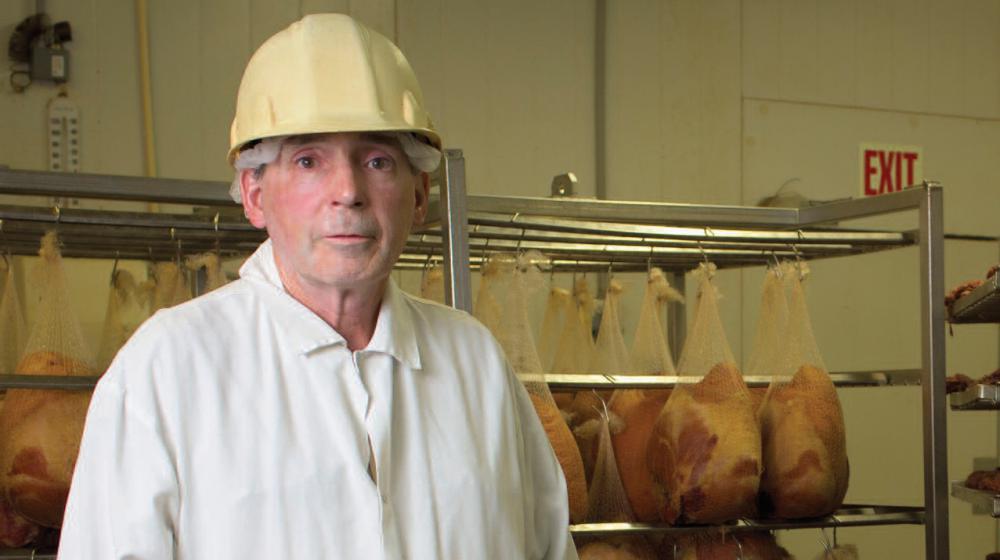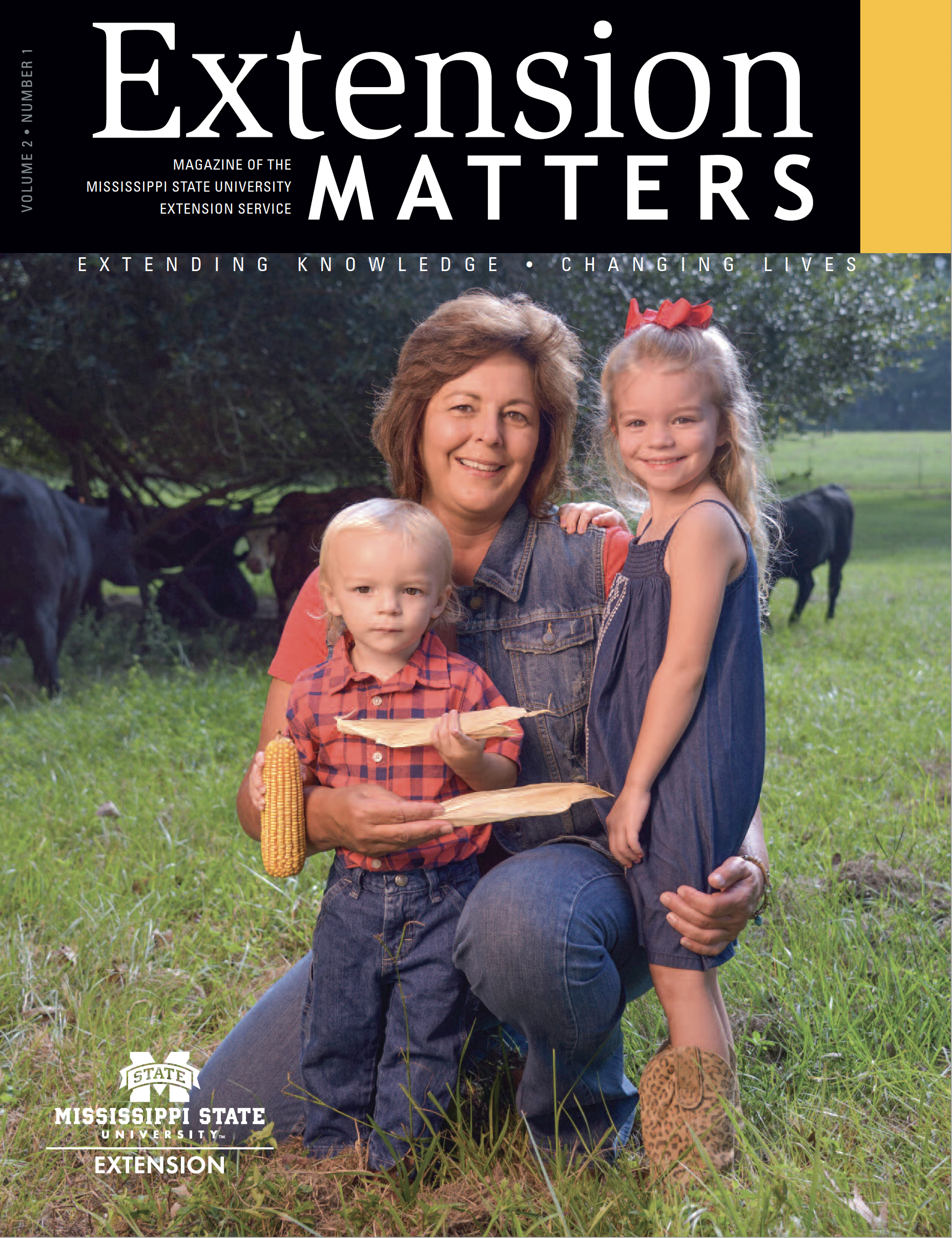Meeting the Mark

Freddie Enslin, Hattiesburg meat producer
Meat processors maintain compliance through Extension training, assistance
Enslin & Son Packing Co. in Hattiesburg features a variety of traditional and specialty sausages and smoked meats.
Company President Freddie Enslin says that having great products attracts customers from all over South Mississippi, but selling items like their popular jalapeño and cheddar sausage is only one reason the business has been thriving for more than 90 years.
The family-managed meat processing facility, jointly owned by Enslin and his four siblings, must comply with numerous federal food safety laws. He says the MSU Extension Service’s family and consumer sciences division provides Enslin & Son Packing Co. the nutrition and food safety trainings it needs to stay in compliance and offer wholesome, safe, and reliable food products.
He explains that J. Byron Williams, an Extension food scientist and Mississippi Agricultural and Forestry Experiment Station researcher specializing in meat processing, has remained an instructor and advocate for Enslin & Son Packing Co. as industry regulations have evolved over time. Enslin recommends that other, similar industries participate in Extension food preservation and safety trainings and workshops.
“I can attest to what Byron has done for us in Extension; I definitely would recommend Extension services,” Enslin says. “If Byron offers workshops, I work to be part of those trainings, even if it’s not directly about what we’re doing in our company—it’s still the food industry and food science.”
Whether helping Enslin develop food defense strategies for his business, teaching him the terminology appropriate for formal regulatory reports, or acting as a client advocate with industry leaders, Williams helps Enslin keep the meat processing business both compliant and efficient.
Food defense plans help prepare processing facilities for both intentional attacks and major environmental events, such as severe storms, fires, explosions, or other disasters. The most recent workshop Enslin attended suggested food defense planning strategies to help his company guard against intentional or accidental contamination that could affect the safety of ingredients, final products, and the business’s sustainability.
“Now, we’ve got a system for food defense with improved plant security and truck security,” Enslin says. “We also learned more about how to keep the correct documentation.”
As a dedicated employee of the family business since third grade, Enslin well understands the ins and outs of meat processing, but he admits that his understanding of the technical side of the industry continues to evolve. Extension education from a reliable source is allowing the company to better meet the technical standards, he says.
“Byron’s doctorate (in food science and technology) gives credence to what he says,” Enslin reveals. “He holds Extension trainings that are enhancing what we’re already doing. He gives us ideas on various aspects of the technical side of the business, and he’s been a big help, especially in helping us speak the right lingo.”
Enslin says he sometimes drafts reports with simple terminology to explain regulatory processes, but his word choices may not match the federal reviewers’ expectations. When Enslin explains the specific processes and techniques he’s reporting, Williams often suggests more appropriate terminology.
“The federal people write the guidelines, and though we are already complying, we may not be reporting in the language we’re supposed to,” Enslin says. “But Byron is helping us by suggesting ways we can rephrase to help the federal regulators know what we’re doing.
“Byron understands what I’m trying to say but doesn’t tell me what to say. He’s been trained in what the feds are looking for, too. That’s helped me—and the business—tremendously.”
Williams acts as an advocate and mediator for his clients, Enslin emphasizes. Whether Williams is speaking to leaders in Jackson or in Washington, D.C., he supports Mississippi meat processors on issues of food safety and food integrity.
“Extension has helped keep us in compliance with the regulatory agencies,” Enslin says. “The agency puts it into the world of reality instead of a world of theory. We can understand what they’re trying to achieve, and they can see what we’re trying to do.
“Customers can be confident in what we’re doing together.”
The U.S. Department of Agriculture and the Food and Drug Administration distribute surveys, strategies, and guidelines that explain potential vulnerabilities in a food company’s infrastructure.
FIRST, survey the basic issues—
- Facility and premises security.
- Incoming ingredients procedure.
- Supply acceptance process.
- Transportation.
- Inventory.
- Ingredients.
- Processing procedures.
- Visitors.
NEXT, evaluate which areas need enhanced security—
- Slaughter and processing areas:
- Holding pens.
- Integrity of flow lines, including gas, water, electricity, etc.
- Storage security:
- Inventory of ingredients.
- Inventory of hazardous chemicals.
- Procedures for storage and disposal of chemicals.
- Shipping and receiving:
- Monitoring and testing of incoming ingredients.
- Records of inspections.
- Usage of tamper-evident seals on trucks and products.
- Deliveries checked for all materials.
- Notification of deliveries.
- Returned goods and policies procedures.
- Water and ice supply:
- Restricted access to the water supply.
- Restricted access to ice machines.
- Restricted access to storage tanks.
- Waterline integrity.
- Prompt communication with local health officials if water supply concerns arise.
- Security throughout the supply line:
- Knowledge of suppliers’ defense plans.
- Reliability of suppliers.
- Certificates of analysis on incoming raw materials.
- Adequate tracking system of products, raw materials, and finished products.
FINALLY, develop a functional food defense plan—
- Create plan based on the vulnerabilities revealed by facilities evaluation and risk assessment.
- Implement the plan.
- Test the plan by periodically monitoring the defense measures:
- Make unannounced entrances at random perimeter checkpoints.
- Check locks on doors, storage areas, bulk tanks, water/ice supplies, windows, offices, one way exit doors, etc.
- Perform a mock recall.
- Test lab or storeroom inventory procedures.
- Assess the plan periodically—at least annually—to ensure security.
Information from “Food Defense and Biosecurity: Elements and Guidelines for a Defense Plan” by
J. Byron Williams. Pub # 2593 http://msucares.com/pubs/publications/p2593.pdf


